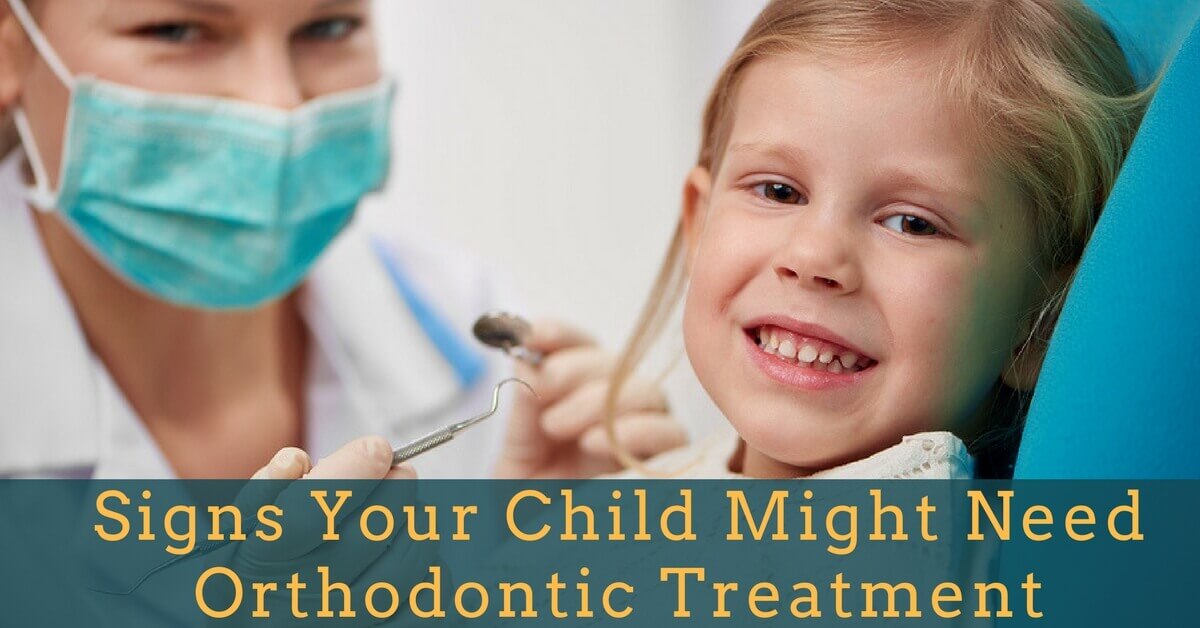Childhood is a critical time for establishing orthodontic health. This is the easiest time to make adjustments to the location and alignment of teeth, and early corrections can make a lifetime of difference. Making orthodontic exams a part of your child’s annual check-up schedule is common sense – it allows potential issues to be identified early and then treated when there is the most flexibility for repositioning in the mouth.
Experts recommend beginning a routine of regular biannual dental visits once your child turns one year old. Recommendations for orthodontic exams start a little later, once adult teeth have started to come in around age 7. If orthodontic issues are found in your child’s regular dental exam, your dentist will refer you to an orthodontist for further examination.
Additionally, if you notice irregularities in your child’s teeth it is time to schedule a visit to your orthodontist. Here are some of the most common orthodontic conditions.
Call to Schedule A Dental Consultation
Malocclusion Problems
Malocclusion issues are misalignments that occur in your child’s bite. Bite problems are often hereditary and they can happen in a variety of different arrays depending on how the jaws are shaped. When the jaws are correctly aligned, the grooves in the back molar teeth should fit together and the upper teeth should fit slightly and tightly over the lower teeth.
When there is a malocclusion, correction is important. Misaligned teeth can grind into each other causing harmful wear on the teeth. In severe cases, malocclusions can often interfere with jaw development and can contribute to conditions like TMJ (temporomandibular joint disorder).
Overbite
An Overbite is when the upper front teeth extend over and largely cover, or hide, the lower teeth in a vertical direction. It is sometimes called a “deep bite.”
Open Bite
An Open Bite is the reverse of an overbite where the upper and lower teeth don’t touch at all. Having an open bite can make chewing, biting and speaking difficult or painful. Open bites are common with prolonged pacifier use or thumb/finger habits.
Overjet
Overjet is the term for protrusion of the front upper teeth, or how far out the upper front teeth stick out past the lower front teeth. Excessive overjet makes teeth especially vulnerable to injury and damage if a child were to fall or get hit in the face.
Underbite
An Underbite is a malocclusion problem where the teeth of the bottom jaw extend in front of the upper teeth. Underbites are often caused by issues with jaw size.
Crossbite
A Crossbite is the term for when lower teeth do not directly align with their corresponding upper teeth. It is ideal to have top teeth overlap bottom teeth. A crossbite occurs when the bottom teeth overlap the top teeth. An underbite is a type of crossbite.
Schedule An Orthodontic Appointment
How to Recognize Misaligned and Crowded Teeth
As your child’s teeth come in, it’s important to check and make sure they are growing straight and not being crowded or turned. Crowded teeth push each other into uneven and overlapping positions. When crowded teeth are not corrected, they can worsen with time and become increasingly harder to correct. Teeth and gums are most malleable during childhood when growth is still occurring, so correcting these issues during childhood is the most successful and least stressful way to handle a misalignment problem. Crooked teeth are also harder to clean, and can have a greater susceptibility to tooth decay and gum diseases with poor oral hygiene.
Problems With Baby Teeth
Baby teeth set the stage for a child’s dental development, helping the jaws form correctly and guiding adult teeth into their locations. When baby teeth are lost prematurely, before adult teeth are ready to take their place, they can create problems with tooth location. Without the guidance of a baby tooth, adult teeth have a far greater likelihood of coming in at the wrong spot. If your child has lost baby teeth early, before their adult teeth are due, make sure they see a pediatric dentist or orthodontist regularly to monitor for problems with incoming adult teeth.
Thumb Sucking
While a thumb sucking habit may seem innocent enough, it can actually cause considerable orthodontic concern as the front upper teeth are gradually pulled forward from their natural position. It is recommended that thumb/finger habits stop by age 3-4, prior to the emergence of any permanent teeth.
Choose Fox Kids Dentistry & Orthodontics
Have you noticed any of these issues with your child’s teeth? If you have a specific concern, or want to schedule a regular checkup, Fox Kids Dentistry & Orthodontics is here for you and your child. Our full range of pediatric dental and orthodontic care means we can help your child get started on a lifetime of happy, healthy smiles. Give us a call to set up an appointment today!
Call to Schedule A Dental Consultation

